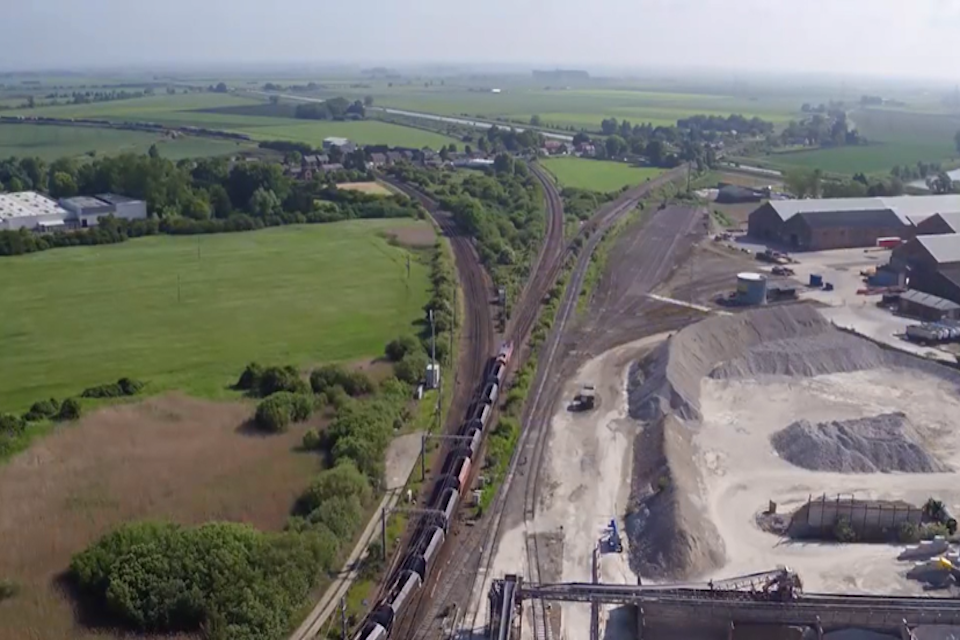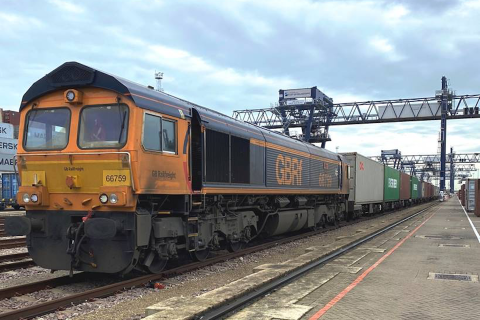UK town “blames” rail freight for congestion

The small market town of Spalding in the middle of Lincolnshire, on England’s east coast, has raised its arms in protest at a somewhat blameless rail freight industry. Town representatives have claimed freight operations are to “blame” for a residential and road development which they say will blight their town. A somewhat confused local media report maligns Network Rail for “refusing” to install a bridge at a busy level crossing in the town centre.
Local traffic in the centre of Spalding is interrupted by a series of level crossings, which allow the railway to pass through the settlement. The population of around 35,000 owe much of the their historical prosperity to the railway, but that history has not stopped an hysterical outcry at rail freight traffic putting the brakes on local road movements. Fears that increased rail freight will stifle local development have been voiced in an outright attack on the railway, for “forcing” alternative road development.
Rail a part of the historic landscape
If here is on thing Lincolnshire is not famous for – it’s mountains. The billiard-table flat landscape has been both an inspiration and a source of exasperation for all time. The two-dimensional landscape is a challenge for all forms of communication, making the interfaces between water, road and rail all a headache for travellers and traders.
The drainage channels built into the low-lying Fens, made agriculture possible, and provided the means to ship produce to market. The roads of the region have developed alongside those waterways, but the railways cut across the landscape with a necessary directness that means there are more level crossings in this region than anywhere else in England. That historical legacy has been a source of frustration of the ever-increasing number of road users over the decades. Now, the railway, and freight in particular, is actually being blamed for stifling development in Spalding.
Road development already underway
Spalding town forum chair Roger Gambba-Jones, a former member of the local authority for the region, is quoted in a confused media report, putting the “blame” for a new road development on the shoulders of Network Rail, the infrastructure management agency for Britain’s railways. “In the grand scheme of things we would rather leave the land undeveloped”, he says. It’s an issue Gambba-Jones has raised several times in his own blog.

Spalding’s Western Relief Road project is already well underway – a fact evidently viewed from the railway line. Clearly its a big construction scar on the landscape. Gambba-Jones says the town would rather the land were left untouched. “We aren’t because of the impact of the railway line on Spalding and the fact that Network Rail completely ignored our appeals to do something about that”, he says. In a reference to level crossing operations, he claims that early in 2008, Network Rail “threatened us with 40 minutes in an hour and started the whole problem for us.”
Spalding freight access improved
It is true that the line through Spalding is becoming a more important route for freight. Increased traffic on the parallel East Coast Main Line makes this route a strategic part of the freight network. NR specifically made reference to improved freight access to Spalding when it installed the Werrington grade separated junction, north of Peterborough. However, freight has always been a user of the line. The “Cathedrals Route” which parallels the ECML, connects agricultural market towns up and down the east of England. The line is so named for its visits to communities blessed with grand places of Christian worship, including Gainsborough, Lincoln and Ely.

Of them all, Ely will be most readily recognisable to the rail freight industry. The vast romanesque “ship of the Fens” is a centuries-old landmark for drivers approaching the complicated railway junctions at Ely. The well-documented upgrades at Ely are making the Cathedrals Route more accessible to modern freight operations, including the intermodal traffic serving the Port of Felixstowe.
Spalding’s historic sugar beet industry may have generated traffic in the past. Today’s containerised rail freight traffic seems to be leaving a somewhat more bitter taste in the mouth of a vocal part of the community. No mention of the issue was made in the most recently minutes meeting of the town forum.
You just read one of our premium articles free of charge
Want full access? Take advantage of our exclusive offer






A paradox it seems, but as stuck at standards, already not optimal 30 years ago, current “investment” at infrastructure of railways, just pave for new “bottlenecks” and “noise barriers”, etc.!
For added capacity and added utilisation of vast existing assets, roads, etc., regrettably current railway standard, “state of the art”…, is not optimal.
Again, low price is proving high cost!
Investment worth name, shall prove resilient, thus sustainably, robustly provide for added load capacity, etc.!
It’s totally impractical to raise or lower a railway line for one road crossing, so it’s the road that has to be raised on a bridge or lowered into a tunnel. Fitting in the necessary ramps often involves blocking access to or the removal of adjacent properties a point usually ignored by those who shout for “something to be done about it.”
As a resident of Spalding while I do not agree with R G-J on many things on this he actually has a point. There need to be serious discussions between the local Council and Network Rail to get the issue of level crossing closures resolved. FYI R G-J is not a former member of the local authority but is a current and very active local Councillor.